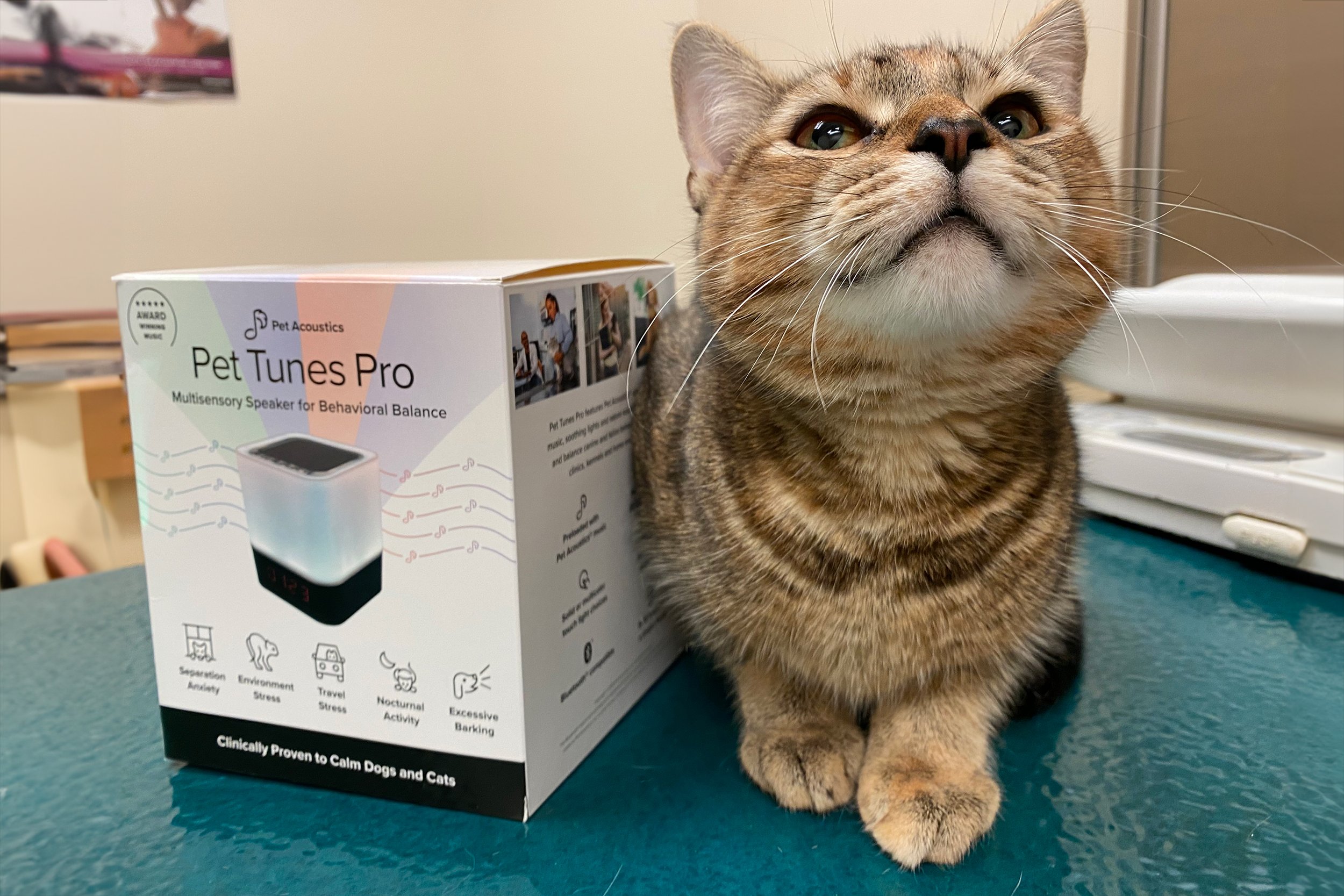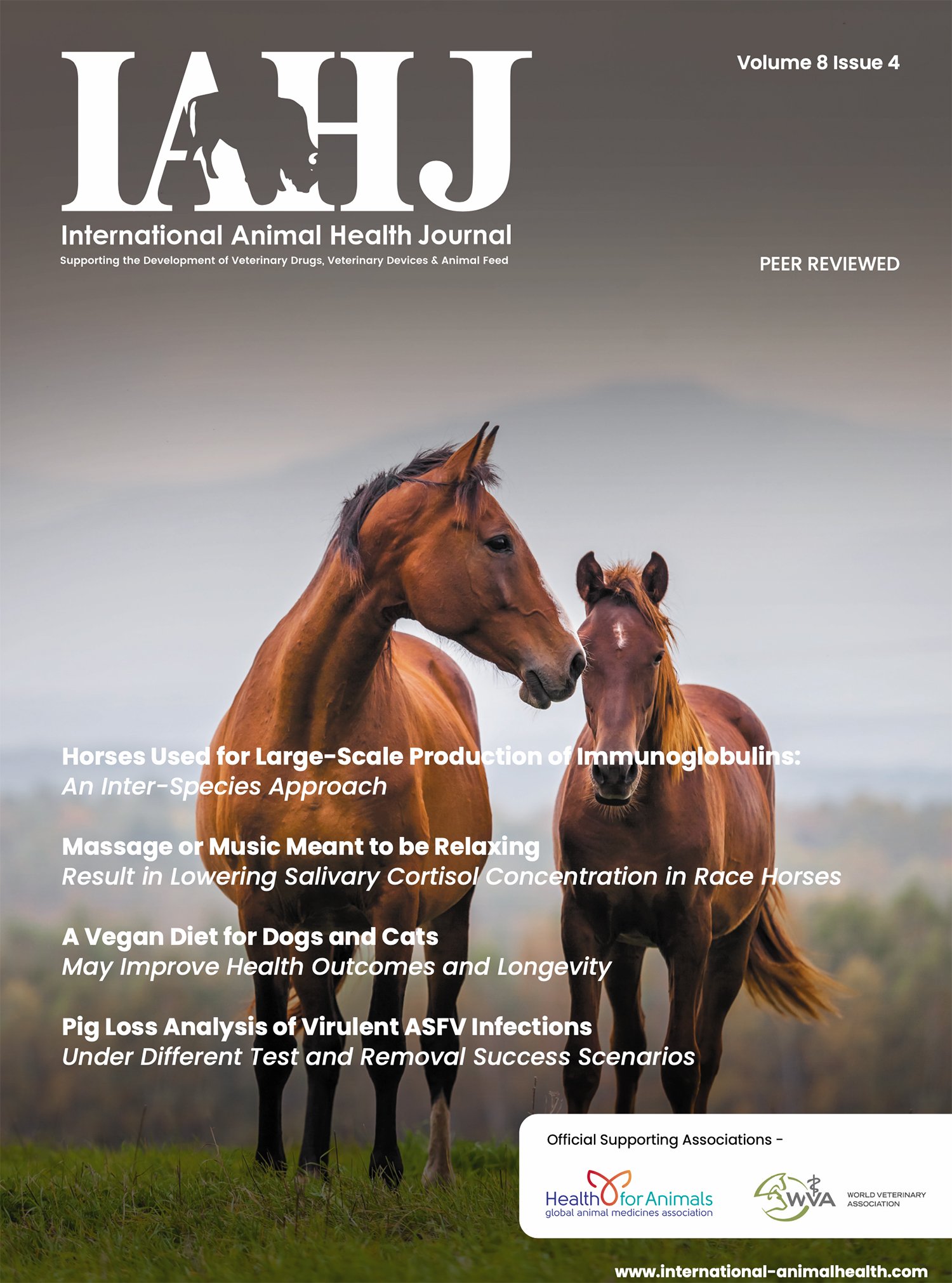The musical arrangement features soothing music designed with the horse in mind. The track was created by Janet Marlow, sound behaviorist, composer, researcher and founder of Pet Acoustics Inc. Marlow focused on creating rhythms and melodies composed for the listening comfort of the horse, including specific pitch, tone and frequencies. Studies show that playing music can help balance equine behavior because it helps mask outside sounds and vibrations, as well as provide a positive and relaxing effect.2
“When Boehringer Ingelheim expressed an interest in doing something to help manage stress in horses, I was extremely interested based on my research in this area,” said Janet Marlow, founder of Pet Acoustics. “It’s all about composing music and modifying the decibel and frequency levels of each note for the comfortable hearing range of the animal. Using this process, we have tested music through clinical studies at veterinary hospitals, barns, etc. to see the music elicit a release of physical tensions and stress behaviors.”2
To access it, veterinarians and horse owners can visit https://www.youtube.com/channel/UCoekmWDxfuaOGuL1ELoPIGQ/videos. Visitors will be able to play the music track and video, as well as gain access to additional resources on stress, EGUS, and ways to help prevent it.
This includes information on the use of Ulcergard® (omeprazole), to help reduce the creation of acid in a horse’s stomach during times of stress, helping to maintain optimal gastric health. For ulcer prevention, horses should be given ULCERGARD once daily during these stressful periods. ULCERGARD is the only prevention for equine gastric ulcers that is proven to be safe, effective and approved by the FDA.
ULCERGARD IMPORTANT SAFETY INFORMATION: ULCERGARD can be used in horses that weigh at least 600 lbs. Safety in pregnant mares has not been determined. Not for use in humans. Keep this and all medications out of the reach of children. In case of ingestion, contact a physician.
For horses, stress is no one thing. It can include a variety of triggers, including fireworks, thunderstorms/weather, rigorous training, competitions, travel/trailering, competitions, dehydration, limited forage, changes in daily routine, isolation, new stall neighbor, illness, etc.
“These may seem like small changes or events, but they can create big issues for horses, potentially leading to gastric ulcers,” says Sarah Reuss, VMD, DACVIM, Equine Technical Manager for Boehringer Ingelheim. “Often times horse owners either don’t know how or are just unable to take the proper proactive steps to limit the impact of stress on the gastric health of the animal. Creating a more positive environment through the use of music and adding ULCERGARD when stress can’t be avoided can help minimize the impact.”
To learn more about EGUS prevention, visit https://m.info.boehringer-ingelheim.ca/webApp/Equine_Ulcergard_Index.
References
1McClure SR, Carithers DS, Gross SJ, Murray MJ. Gastric ulcer development in horses in a simulated show or training environment. J Am Vet Med Assoc 2005;227(5):775-777.
2Kędzierski, W., Janczarek, I., Stachurska, A., & Wilk, I. (2017). Massage or music meant to be relaxing, result in lowering salivary cortisol concentration in race horses. Pferdeheilkunde Equine Medicine, 33(2), 146–151. https://doi.org/10.21836/pem20170206.
Boehringer Ingelheim Animal Health
The lives of animals and humans are interconnected in deep and complex ways. We know that when animals are healthy, humans are healthier too. Across the globe, our 9,700 employees are dedicated to delivering value through innovation, thus enhancing the well-being of both.
Respect for animals, humans and the environment guides us every day. We develop solutions and provide services to protect animals from disease and pain. We support our customers in taking care of the health of their animals and protect our communities against life- and society-threatening diseases.
Boehringer Ingelheim Animal Health is the second largest animal health business in the world, with net sales of $4.7 billion (4.1 billion euros) in 2020 and presence in more than 150 countries.
Boehringer Ingelheim Animal Health has a significant presence in the United States, with more than 3,100 employees in places that include Georgia, Missouri, Iowa, Minnesota, New Jersey and Puerto Rico. To learn more, visit www.boehringer-ingelheim.us, www.facebook.com/BoehringerAHUS or www.twitter.com/Boehringer_AH.
Boehringer Ingelheim
Making new and better medicines for humans and animals is at the heart of what we do. Our mission is to create breakthrough therapies that change lives. Since its founding in 1885, Boehringer Ingelheim has been independent and family owned. We have the freedom to pursue our long-term vision, looking ahead to identify the health challenges of the future and targeting those areas of need where we can do the most good.
As a world-leading, research-driven pharmaceutical company, with around 52,000 employees, we create value through innovation daily for our three business areas: Human Pharma, Animal Health, and Biopharmaceutical Contract Manufacturing.
In 2020, Boehringer Ingelheim achieved net sales of around $22.33 billion (19.57 billion euros). Our significant investment of over $4.2 billion (3.7 billion euros) in 2020 (18.9% of net sales) in R&D drives innovation, enabling the next generation of medicines that save lives and improve quality of life.
We realize more scientific opportunities by embracing the power of partnership and diversity of experts across the life-science community. By working together, we accelerate the delivery of the next medical breakthrough that will transform the lives of patients now, and in generations to come.
©2021 Boehringer Ingelheim Animal Health USA Inc., Duluth, GA. All rights reserved. US-EQU-0169-2021
VMLY&R Media contact
Julie Balmer
PR Director, VMLY&R
913.526.8186
julie.balmer@vmlyr.com







































